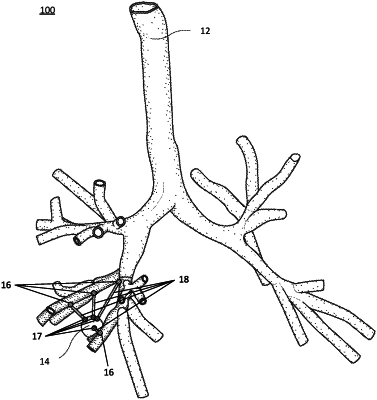| CPC A61B 34/10 (2016.02) [A61B 34/20 (2016.02); G16H 20/40 (2018.01); G16H 50/30 (2018.01); G16H 50/50 (2018.01); A61B 2034/101 (2016.02); A61B 2034/107 (2016.02)] | 20 Claims |

|
1. A non-transitory computer-readable storage medium storing instructions which, when executed by a processor, cause the processor to:
generate a three-dimensional (3D) model of a patient's lungs;
identify a point on a pleural surface of the patient's lungs with access to a target location in tissue of the patient's lungs from the 3D model;
determine an access path between the target location and the identified point on the pleural surface;
identify a percutaneous entry point on an exterior of the patient's body;
generate an insertion pathway between the identified percutaneous entry point and a point on the pleural surface;
determine if the point on the pleural surface of the generated insertion pathway is different from the identified point on the pleural surface of the access path;
generate a second insertion pathway if it is determined that the point on the pleural surface of the generated insertion pathway is different from the identified point on the pleural surface of the access path;
calculate a risk of injury to intervening structures between the target location and the identified point on the pleural surface of the access path, based on the access path;
receive data describing a position of a surgical tool within a body of a patient; and
cause movement of a surgical tool along at least one of the access path, the insertion pathway, or the second insertion pathway.
|